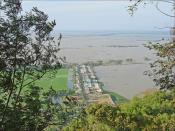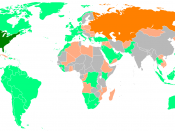TABLE OF CONTENTS1.0INTRODUCTION2.0 Development of economical policy structure3.0Stepping into the global market4.0Obstacles to continued economical growth5.0Opportunities for Multinational BusinessCorporations6.0Current state of economy and ongoingChallenges7.0Major elements of future economicalProsperity8.0Some drawback of economical growth viaGlobalization9.0CONCLUSION10.0REFERENCES1.0: IntroductionHo Chi Minh first proclaimed Vietnam's independence under one government in September 1945 more than a century after France divided Vietnam in order to rule its regions separately [1]. Ironically, Vietnam's fierce determination to remain free of foreign domination has often been combined with an equally strong willingness to accept foreign influence. This has set the stage for global efforts towards a balancing act between public and private control over its economy. Although the communist government in Vietnam attempted to gain an "isolationalist" approach to economics, it has continually veered towards an economically integrated market on the global stage[2].
2.0: Development of economical policy structureIn the early years the economy was guided by a five-year development plan that corresponded to the Soviet and Eastern European planning cycle.
During the 1970's emphasis moved from heavy industry to agriculture and light industry in order to improve material living standards within Vietnam as well as develop exports to earn foreign exchange. The south was viewed as the main food basket and supplier for the nation as well as a producer of light industrial goods [1]. This plan was built on the assumption of United States aid after normalization of ties. However, contrary to expectations, little aid from the United States was delivered, and foreign aid in general was reduced in reaction to Vietnam's invasion of Cambodia. Conflict with China further drained resources.
Economic development efforts in Vietnam during the 1980s and 1990s were tied to communist party economic policies. Party leaders, in establishing economic policy at the Fourth National Party Congress, envisioned Vietnam's post-reunification economy to be in a "period...


